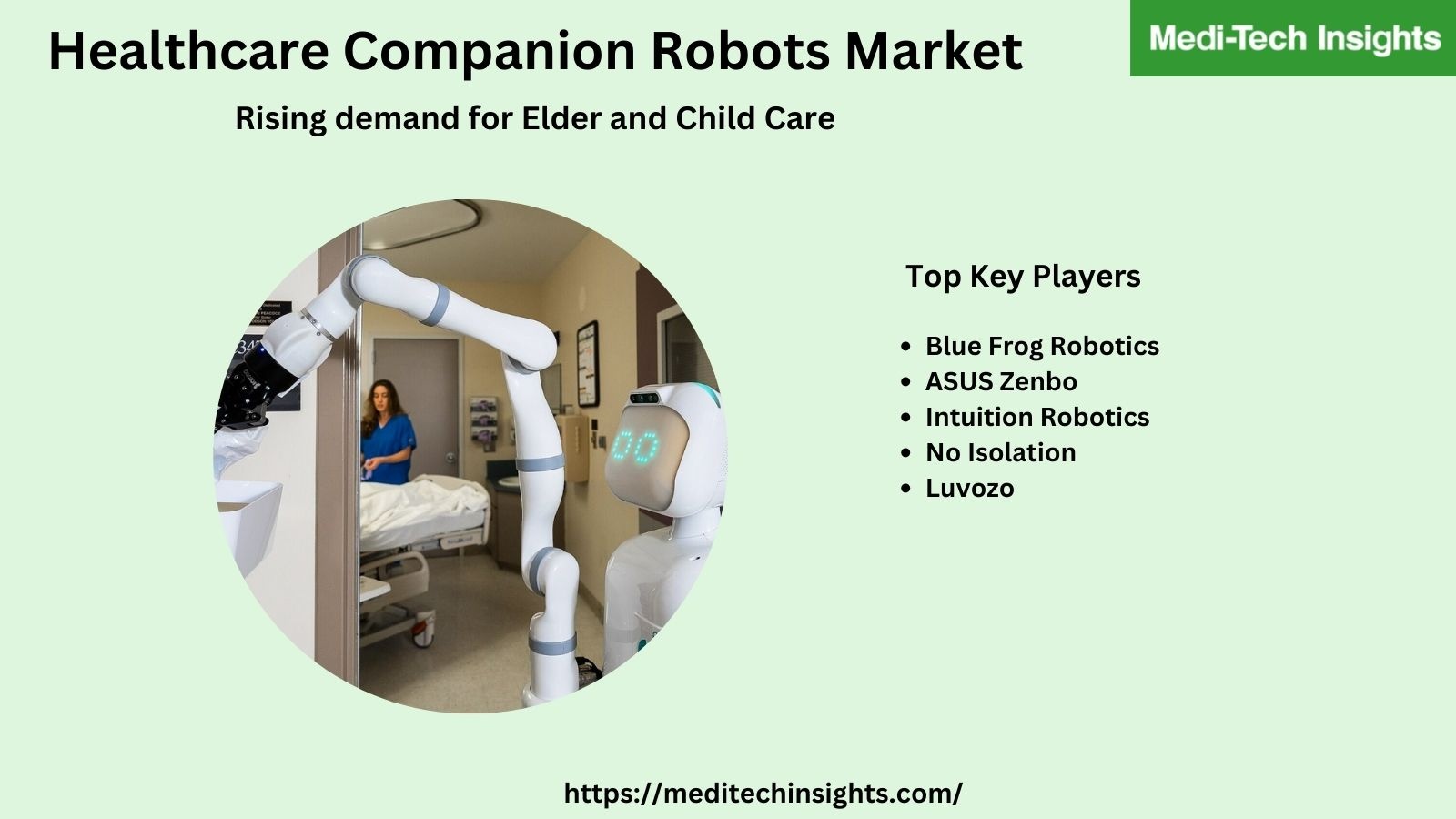The Healthcare Companion Robots market is growing due to an aging population, increased demand for companion robots for elder and child care, rising healthcare expenditures, and breakthroughs in AI and robotics, which make these robots more intelligent and user-friendly. Increased public acceptability, integration with smart home devices, a shift toward remote treatment post-pandemic, and considerable expenditures are all driving market growth. To learn more about the research report, download a sample report.
Companion robots offer companionship and emotional support for children, the elderly, disabled people, and people who live alone or have lost a loved one. They are also used in nursing homes and assisted living facilities for elder care. Over the years, the improvements in sensors, actuators, and AI have allowed people to naturally interact with robots through facial expressions, and verbal, and eye contact. As a result of these improvements, there has been a rise in interest in companion robots.
Growing aging population, the rising cost of elder care, and the shortage of caregivers
The population across the globe is aging and the number of caregivers in relation to the aging population is declining. In Japan, there will be an estimated shortage of 1 million caregivers by 2025. The U.S. is facing a similar problem — as the percentage of people aged 65 or older is expected to rise to roughly 26% by 2050. Moreover, the cost of elder care is also rising. According to Genworth’s Cost of Care Survey, elder care costs in the U.S. are rising. Between 2019 and 2020, the cost of in-home care jumped by about 4.4%; assisted living costs surged by 6.2%; and nursing home costs increased by 3%. The use of robots instead could help reduce this cost. For instance, a monthly service contract for Stevie (a robot developed by Trinity College, Dublin) would likely run between 50-60% of the cost of hiring a human to do the same tasks, as per their claim.
“The growing disparity between healthcare workforce and aging population is a concern in many countries and we believe companion robots have a great role to play in bridging this gap” – CEO, Leading Medical Robots Company
Revolutionizing Healthcare: Emerging Trends in Companion Robots
The landscape of companion healthcare robots is undergoing a profound transformation, characterized by advancements in personalization, emotional intelligence, and mobility. These robots are evolving to cater to individual user needs through sophisticated AI algorithms that facilitate adaptive behaviors. By integrating emotional intelligence, they can now empathetically understand and respond to human emotions, while enhanced mobility capabilities enable support in diverse environments. Furthermore, integration with smart home devices and multimodal interfaces enhances functionality and connectivity, catering to a range of user preferences. The incorporation of telepresence features facilitates remote monitoring and virtual consultations, overcoming geographical barriers to access care. Amidst these advancements, ethical considerations surrounding transparency, consent, and data security remain paramount for upholding user trust and confidentiality.
Regional Adoption: Healthcare Companion Robots Market
Comprehensive regional assessment of the global healthcare companion robots market covering the U.S., Europe, Asia-Pacific, and RoW suggests that the U.S. is currently the largest market for healthcare companion robots, followed by Europe, APAC, and RoW. The key reasons for the large share of the U.S. market are the high adoption/demand for companion robots, the growing aging population, the greater purchasing power of the U.S. population, and a large number of hospitals/home-care facilities using companion robots.
Competitive Landscape Analysis: Healthcare Companion Robots Market
Some of the key and established players operating in the global healthcare companion robots market are Blue Frog Robotics, ASUS Zenbo, Intuition Robotics, No Isolation, Luvozo, Honda Robotics, Hanson Robotics, Ubtech, Emotix, Jibo, and Aeolus Robotics among others
The global healthcare companion market is a growing market that is expected to gain further momentum in the coming years due to technological advancements, new product launches, and aggressive organic and inorganic growth strategies followed by the players.

